what we do
BRIEF AND CONCEPT DESIGNS
Concept Design represents Aqualuce’s vision and interpretation of the Client’s brief. Together, with the nominated Design Teams, we start analyzing the functionality of the space and its intended use in both daylight and evening/night conditions. Here, communication with all parties, helps us review the intended structure of both internal / external and their relevant chosen materials, so that all proposed detailing is carefully defined.
Light enables us all to see, therefore, Aqualuce’s mission statement is to make sure that we propose lighting solutions that will reveal the aesthetics and functional aspects within the project; offering us the opportunity to extend the potentials of each design.

BRIEF AND CONCEPT DESIGNS
Concept Design represents Aqualuce’s vision and interpretation of the Client’s brief. Together, with the nominated Design Teams, we start analyzing the functionality of the space and its intended use in both daylight and evening/night conditions. Here, communication with all parties, helps us review the intended structure of both internal / external and their relevant chosen materials, so that all proposed detailing is carefully defined.
Light enables us all to see, therefore, Aqualuce’s mission statement is to make sure that we propose lighting solutions that will reveal the aesthetics and functional aspects within the project; offering us the opportunity to extend the potentials of each design.
VISUALIZATION AND PRESENTATIONS
The Concept proposal needs to be clear and intuitive.
To help us explain our intended External and Internal Concept Designs, we create computer visuals of the Boat in different working conditions. This can either be Computer Generated Images with lighting effect, photorealistic renders, moving film or Real Time rendering, whichever suits the project’s requirements. Various visualisation options may be available, depending on Brief and Project requirement.

VISUALIZATION AND PRESENTATIONS
The Concept proposal needs to be clear and intuitive.
To help us explain our intended External and Internal Concept Designs, we create computer visuals of the Boat in different working conditions. This can either be Computer Generated Images with lighting effect, photorealistic renders, moving film or Real Time rendering, whichever suits the project’s requirements. Various visualisation options may be available, depending on Brief and Project requirement.
SIGNATURE LIGHTING
Aqualuce was probably the first Lighting Design Company to introduce Signature Lighting into External Marine Lighting applications.
The Al Salamah 140m launched in 1999 was defined by its Signature blue side emitting fiber optic mast lighting.
This defines the Ship’s Identity and allows the boat to be instantly recognized at sea or in Harbor especially when surrounded by other boats.
This is like a Corporate Identification or Project Statement; respecting the overall design ethos; reflecting tradition, innovation, and an elegant solution for quick recognition.
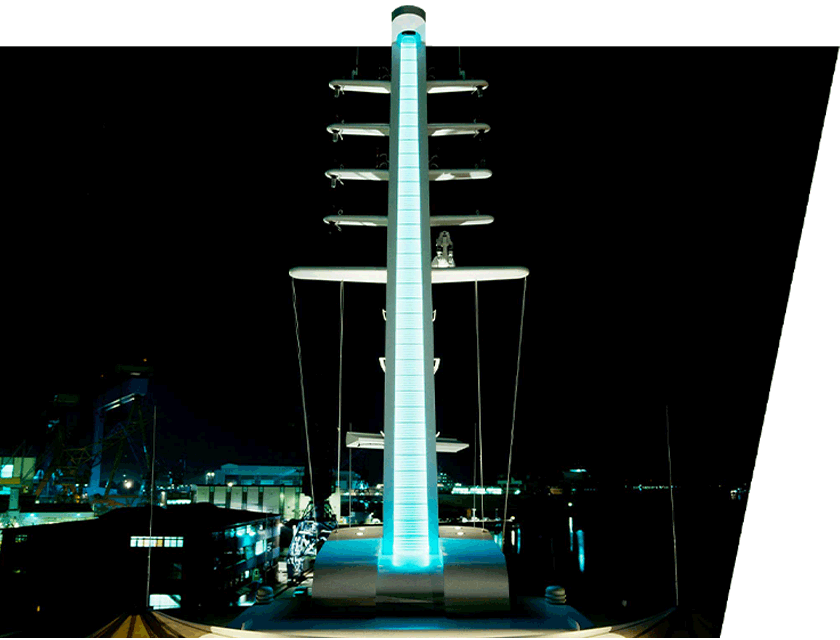
SIGNATURE LIGHTING
Aqualuce was probably the first Lighting Design Company to introduce Signature Lighting into External Marine Lighting applications.
The Al Salamah 140m launched in 1999 was defined by its Signature blue side emitting fiber optic mast lighting.
This defines the Ship’s Identity and allows the boat to be instantly recognized at sea or in Harbor especially when surrounded by other boats.
This is like a Corporate Identification or Project Statement; respecting the overall design ethos; reflecting tradition, innovation, and an elegant solution for quick recognition.
ART LIGHTING
We make sure that the Art Lighting is an integral part of the interior lighting scheme.
The artworks should be lit correctly, respecting all conservation requirements. The positioning must be calculated to enable correct illumination and choice of the luminaire is tailored to suit the type of artwork – drawings, oil, sculpture material, limits of lux levels and similar.
This also means that general lighting in the space needs to be balanced in harmony and often guided by the art lighting requirements, complementing but not interfering.
Where art has not been finalised, we work on allocation within the layout, making sure that there is enough versatility of use. The specification detailing may come late in the project when the artwork has been chosen.
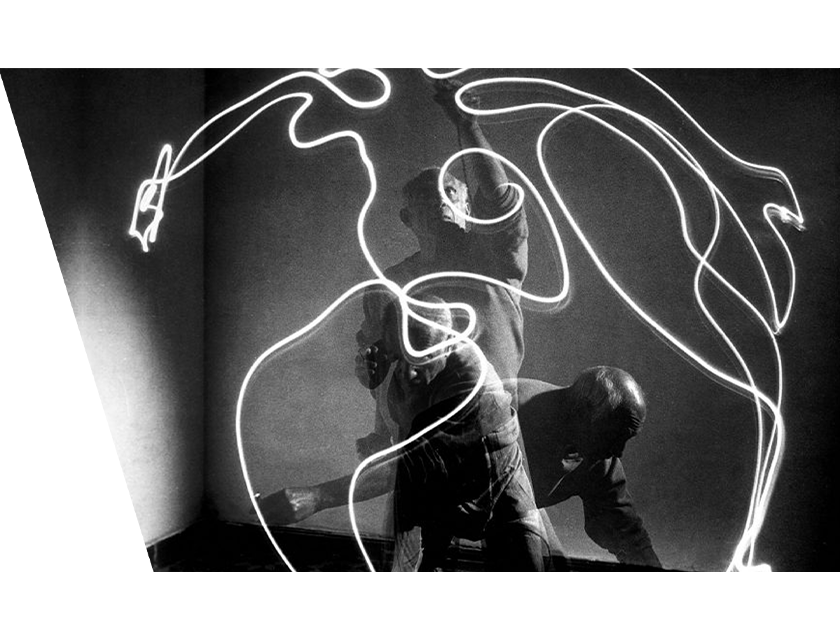
ART LIGHTING
We make sure that the Art Lighting is an integral part of the interior lighting scheme.
The artworks should be lit correctly, respecting all conservation requirements. The positioning must be calculated to enable correct illumination and choice of the luminaire is tailored to suit the type of artwork – drawings, oil, sculpture material, limits of lux levels and similar.
This also means that general lighting in the space needs to be balanced in harmony and often guided by the art lighting requirements, complementing but not interfering.
Where art has not been finalised, we work on allocation within the layout, making sure that there is enough versatility of use. The specification detailing may come late in the project when the artwork has been chosen.
WORKING DESIGN
Once Concept Design has been approved and signed off, we produce technical drawings and all the necessary information required for the construction stage of the project.
This phase has the highest volume of work since it goes in parallel with the detailing of the design and creating the infrastructure – the projects circuitry and its relevant control.
The technical specifications will be transferred into CAD drawings and contain all information important for the tendering / construction phases – luminaire types, positioning, lighting loads, their circuitry and the ancillary equipment required to make them work.
In addition to this, Aqualuce will work with the respective Interior Designer to determine how to control lighting from outside in order to provide privacy of the occupants. We then introduce on the CAD plans the relevant information for all blinds types, curtains and other chosen materials.

WORKING DESIGN
Once Concept Design has been approved and signed off, we produce technical drawings and all the necessary information required for the construction stage of the project.
This phase has the highest volume of work since it goes in parallel with the detailing of the design and creating the infrastructure – the projects circuitry and its relevant control.
The technical specifications will be transferred into CAD drawings and contain all information important for the tendering / construction phases – luminaire types, positioning, lighting loads, their circuitry and the ancillary equipment required to make them work.
In addition to this, Aqualuce will work with the respective Interior Designer to determine how to control lighting from outside in order to provide privacy of the occupants. We then introduce on the CAD plans the relevant information for all blinds types, curtains and other chosen materials.
ENGINEERING DESIGN
Engineering is the most critical part of the design as it helps determine the visual quality of the project.
The light source should never be visible, and it should be perfectly integrated to blend within the Architectural and Interior detailing as defined by the Naval Architect, Interior Designer, or other Design Consultant.
This is a very time-consuming exercise as every lighting component needs to match its surroundings whether it is a tonal quality to the finishes, integration into a design detail or reviewing an artwork type and its positioning.
As previously mentioned, every component should be easy to execute and most importantly maintained by the future crew.
The perfection of detailing is very evident once the design has been programmed and commissioned
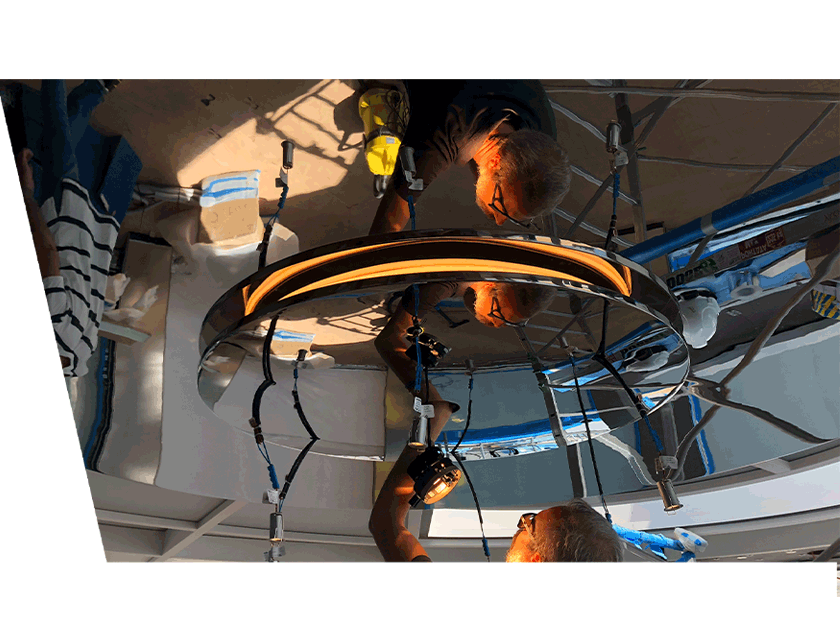
ENGINEERING DESIGN
Engineering is the most critical part of the design as it helps determine the visual quality of the project.
The light source should never be visible, and it should be perfectly integrated to blend within the Architectural and Interior detailing as defined by the Naval Architect, Interior Designer, or other Design Consultant.
This is a very time-consuming exercise as every lighting component needs to match its surroundings whether it is a tonal quality to the finishes, integration into a design detail or reviewing an artwork type and its positioning.
As previously mentioned, every component should be easy to execute and most importantly maintained by the future crew.
The perfection of detailing is very evident once the design has been programmed and commissioned
LIGHTING SPECIFICATION
Selection of the intended products to be utilized and definition of the specification, generally works in parallel with Working Design / Engineering processes during the Design Phase.
We choose the product able to illuminate the space in line with all the necessary design requirements. These include lumen output, wattage, colour rendition, colour temperature, selected kelvin value and beam width distribution.
As an Independent Design Consultancy, we have no obligations to use any particular product range and this gives us full flexibility in our designs. Our only preference is to find the right quality product which delivers the design intent, lives up to the manufacturers claims, works as defined and is easy to maintain during its lifetime.

LIGHTING SPECIFICATION
Selection of the intended products to be utilized and definition of the specification, generally works in parallel with Working Design / Engineering processes during the Design Phase.
We choose the product able to illuminate the space in line with all the necessary design requirements. These include lumen output, wattage, colour rendition, colour temperature, selected kelvin value and beam width distribution.
As an Independent Design Consultancy, we have no obligations to use any particular product range and this gives us full flexibility in our designs. Our only preference is to find the right quality product which delivers the design intent, lives up to the manufacturers claims, works as defined and is easy to maintain during its lifetime.
LIGHTING AND BLIND CONTROL
One of the most important parts of any project is to make sure that what has been designed can be functional and easily operated via the Lighting/Blind – Control System.
This is the invisible part of the project, but it is this infrastructure that makes the Design work. We promote a standalone lighting system, linked to the audio visual/touch-panel system of the ship, to give flexibility and assurance that lighting/blinds control will operate independently when required. The main considerations for the control design are as follows:
- Control Schematics
- Choice of the control needs to correspond to the Client’s requirements and preferences of operation of the lighting/blinds/curtains systems.
- Needs to maximize potential of the overall lighting scheme.
- It is cost effective in terms of design and installation requirements for this type of project
- User friendly
- Needs to give maximum flexibility to the project itself – through the individual scenes, linking internal and external areas throughout the ship for Owner’s/Crew’s use.
- Provide Safety (where necessary)
- Provide Security (where necessary)
- Event sequencing
- Full ship external lighting control (at harbor, at night sale and similar)
We design lighting/blind control schematics, making sure that all selected products are compatible with the control system, wiring information and technical specification are provided.

LIGHTING AND BLIND CONTROL
One of the most important parts of any project is to make sure that what has been designed can be functional and easily operated via the Lighting/Blind – Control System.
This is the invisible part of the project, but it is this infrastructure that makes the Design work. We promote a standalone lighting system, linked to the audio visual/touch-panel system of the ship, to give flexibility and assurance that lighting/blinds control will operate independently when required. The main considerations for the control design are as follows:
- Control Schematics
- Choice of the control needs to correspond to the Client’s requirements and preferences of operation of the lighting/blinds/curtains systems.
- Needs to maximize potential of the overall lighting scheme.
- It is cost effective in terms of design and installation requirements for this type of project
- User friendly
- Needs to give maximum flexibility to the project itself – through the individual scenes, linking internal and external areas throughout the ship for Owner’s/Crew’s use.
- Provide Safety (where necessary)
- Provide Security (where necessary)
- Event sequencing
- Full ship external lighting control (at harbor, at night sale and similar)
We design lighting/blind control schematics, making sure that all selected products are compatible with the control system, wiring information and technical specification are provided.
PROCUREMENT
Lighting Specification, Estimated Budgets, Procurement protocols
First draft of the specification is already provided in the Design Phase and it will establish the dedicated budget. The final specifications are an ongoing process, developed within different design phases. This allows us to create procurement protocols, plan and deliver the required components when needed but also leave the possibility to customise certain components during the different stages of the fit out.
Structured procurement protocols will help avoiding waste, loss of the equipment and overspend on budgets.
Ordering of Lighting Equipment, Warranty, Delivery of the equipment
We have a dedicated Admin Team that prepares ordering schedules together with our designated Aqualuce Project Manager. They make sure there is a proper coordination in line with the program of Yard works, manufacturer lead time and delivery time to the Yard. We make sure that the products are at the Yard only when effectively needed to avoid the fittings to be lost or damaged. This will also increase the manufacturer Warranty period.
Following agreed Procurement Schedules, all product parts and assemblage instructions are organised according to circuitry/zones, for ease of installation once at Yard.
WE ARE INDEPENDENT LIGHTING DESIGN PRACTICE AND THEREFORE SPECIFY THE PRODUCTS THAT ARE RIGHT FOR THE PROJECT AND IN LINE WITH THE BUDGET
WE CHOSE THE PRODUCT THAT IS BEST FOR ITS TASK AND NOT MANUFACTURER GUIDED
ORGANISED EQUIPMENT MEANS AVOIDING WASTAGE AND MAKE THE INSTALLATION PROCESS SMOOTH
PROJECT MANAGEMENT
Off Site
One of the key elements is coordination with all relevant contractors, and programme of works. We provide regular drawing updates and communication with site management team, follow up with records, reports, drawings, confirmation of Verbal Instructions and cost variations if required. The specification is fully completed in this stage and procurement is coordinated according to schedules.
On Site
We provide regular site inspection and follow the construction progress on site, liaising with the electrical contractor and assist on any problems they are facing.
We would overview the first fix and make sure that the cabling is in correct position and the correct type has been used to satisfy the manufactures specification.
We check light fittings are being installed in accordance with the manufacturer requirements. As the install becomes more advanced, we check the function of the lights including dimming and landing position in the control panels. Co-ordination and progress meetings are regular and define follow-up procedures during different phases of works.
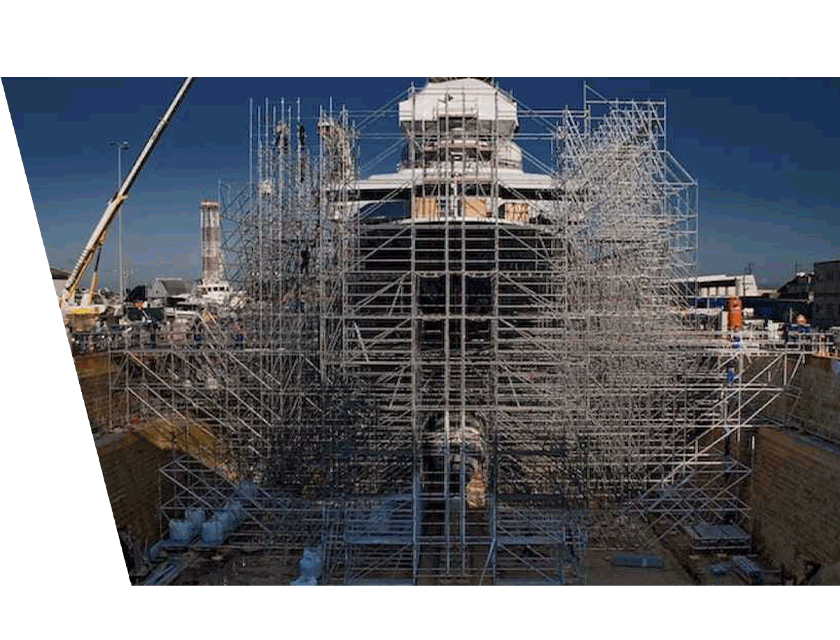
PROJECT MANAGEMENT
Off Site
One of the key elements is coordination with all relevant contractors, and programme of works. We provide regular drawing updates and communication with site management team, follow up with records, reports, drawings, confirmation of Verbal Instructions and cost variations if required. The specification is fully completed in this stage and procurement is coordinated according to schedules.
On Site
We provide regular site inspection and follow the construction progress on site, liaising with the electrical contractor and assist on any problems they are facing.
We would overview the first fix and make sure that the cabling is in correct position and the correct type has been used to satisfy the manufactures specification.
We check light fittings are being installed in accordance with the manufacturer requirements. As the install becomes more advanced, we check the function of the lights including dimming and landing position in the control panels. Co-ordination and progress meetings are regular and define follow-up procedures during different phases of works.
COMMISSIONING
Pre – Commissioning
Although Commissioning is the final part of the Design, it is planned and structured at the Concept Stage. The Lighting Scenes combine design, lighting specification and control all into one simple button press.
Different settings balance the light levels that allow fluid transition from day to night, defining special functions, clear circulation throughout the space and synchronize interior/exterior during different time of day/night as well as time zones .
Control System Commissioning
Consists in writing data base, driver and keypads addressing. Integration link with audio visual and home automation system is completed. Bind control is commissioned and operative via keypads. Initial scene settings are defined as well as keypad engraving proposal.
Design Commissioning
All luminaries are focused in their categories and readjusted to create the best environment. Colours and light tones are balanced in line with interior design colour scheme and relevant details. Scenes are final tuned once FFE, soft furnishing, art positioning is completed in line with Clients and Designer comments.
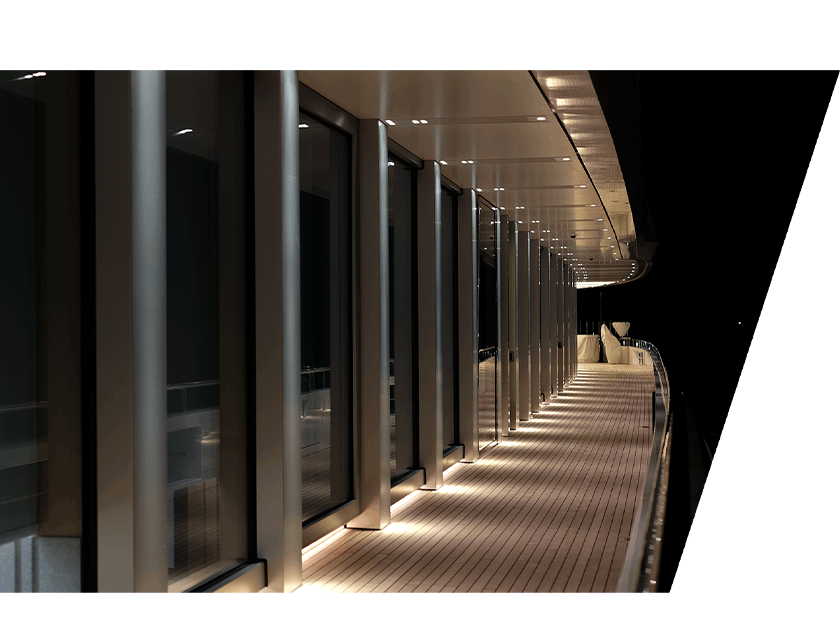
COMMISSIONING
Pre – Commissioning
Although Commissioning is the final part of the Design, it is planned and structured at the Concept Stage. The Lighting Scenes combine design, lighting specification and control all into one simple button press.
Different settings balance the light levels that allow fluid transition from day to night, defining special functions, clear circulation throughout the space and synchronize interior/exterior during different time of day/night as well as time zones .
Control System Commissioning
Consists in writing data base, driver and keypads addressing. Integration link with audio visual and home automation system is completed. Bind control is commissioned and operative via keypads. Initial scene settings are defined as well as keypad engraving proposal.
Design Commissioning
All luminaries are focused in their categories and readjusted to create the best environment. Colours and light tones are balanced in line with interior design colour scheme and relevant details. Scenes are final tuned once FFE, soft furnishing, art positioning is completed in line with Clients and Designer comments.
